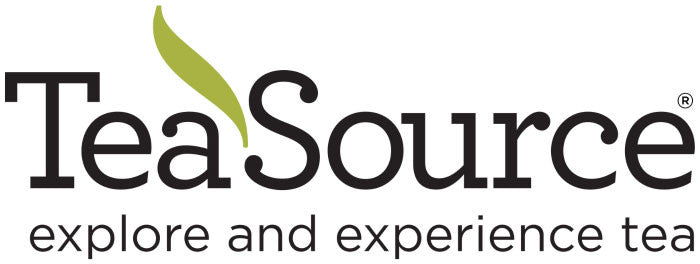The Royal Wedding is coming up on May 19.
Tea time with the queen.
Stick your little pinky out.
How did the tradition of British tea develop?
It began with a princess from Portugal…

Catharine of Braganza (Image source)
Catharine loved tea, possibly more than she loved her betrothed, King Charles II of England. Charles II, after taking the throne back from Oliver Cromwell, ran up huge debts. So he went looking for a young, beautiful, well-connected bride with a very rich father. Enter Catharine of Braganza, whose father King John of Portugal was very, very rich - think the gold and silver mines in the America’s and Portuguese trade routes within its colonial empire.
When Catharine arrived in Britain for her wedding she brought her love of everything tea with her. Before long tea drinking was the all rage among royalty and the upper classes.
I like to think a love of tea brought Catharine comfort on those cold foreign shores.
As the British say; a cup of tea will get you through times of no love, better than love will get you through times of no tea.
The first attempt to get the British public interested in tea came with an advertisement pushing the health claims for tea. Some of these claims were; tea was capable of curing “dropsie,” restoring one’s “lustiness” (we all need our lustiness restored occasionally), overcoming “crudites” and more.
This printed advertisement appeared for a tobacconist named Thomas Garway.

Thomas Garway’s broadside extolling the virtues of tea, 1668.
Some of the more wonderful claims for this strange “herb” from the east include:
“It maketh the Body clean and lusty.
It helpeth the Head-ach, giddiness and heaviness thereof.
It vanquisheth heavy Dreams, easeth the Brain, and strengtheneth the Memory.
It overcometh superfluous Sleep, and prevents Sleepiness in general, a draught of the Infusion being taken, so that, without trouble, whole nights may be spent in Study without hurt to the Body, in that it moderately heateth and bindeth the mouth of the Stomach."
Despite such ads it was a long time before tea drinking was commonplace among all classes.
For a long time most of the tea drunk in Britain was green tea, not ‘British Breakfast blends’ of black tea. It wasn’t until around 1700 that Britain started drinking black tea. And most of it was drunk by only the rich and royal. (Side note; the tea that was thrown into Boston Harbor in 1773 was green tea).
Throughout the 18th century, black tea grew in popularity and came down in price. By 1800 black tea was the most consumed drink (after beer) in Great Britain. Almost all of this black tea which was known as Bohea or Singlo tea came from the Fujian province of China.
British tea as we think of it today, evolved between the 1830’s and 1900, during the long reign of Queen Victoria.

Tea parties, either of the peerage, or in imitation of the peerage became commonplace by the late 1800’s.
Royal tea parties, the use of fine British bone china teaware, and the inculcation of tea into the everyday life of practically all Englishman was complete by 1900.
This love of tea grew even more through 2 world wars. Protection of Britain’s tea gardens in Assam, India, was considered so crucial to the British war effort (and British moral) that many tea planters were not allowed to enter the armed forces. Their work growing and supplying tea to the British Empire was considered more vital to the war effort.
This love of tea became part of the British character as indicated by this short film from 1941 on how to make proper British tea. This film was made in the midst of the Battle of Britain.

from "Tea Making Tips" short film, 1941
What teas do the British drink?
English Breakfast: A strong no-nonsense blend, usually made with some combination of black teas from India, Sri Lanka, or Africa. Although the first tea sold as English Breakfast, was the same tea as our TeaSource Empire Keemun. A strong tea made to stand up to milk and sugar
Irish Breakfast: Another strong tea, usually with a lot of tea from Assam, India, which gives it a distinctive malty character (think Guinness).
Lapsang Souchong: A strong black tea from Fujian, China, that has been smoked over pine fires. It is said to be the favorite tea of Sherlock Holmes and Winston Churchill (as long as there was a shot of whiskey in it).
Earl Grey White Tip: A tea with oil of bergamot, which gives it a floral citrus sweetness. Beloved by Jean Luc Picard and Queen Elizabeth II.
And this brings us up to present day and Queen Elizabeth II, who starts every morning with a pot of Earl Grey tea (no milk or sugar).

Great Britain’s longest reigning monarch serving 63 years.
Tea continues to be the national drink of Britain, as evidenced by this recent ad (which somehow bears a striking similarity to Thomas Garway’s first tea ad) extolling the extreme virtues of tea; from mending a broken heart to fighting zombies.
So when May 19th comes, even if you’re glued to the telly for the wedding, have a nice cuppa British style tea and give thanks that Great Britain embraced tea three and half centuries ago.
Bill Waddington, founder
TeaSource





Comments
Fine blog. Thanks for the read!